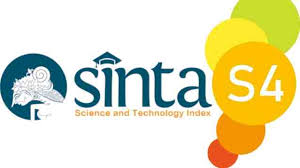Exploring Proxies of Bank Profitability in Indonesia from 2012 to 2023
Keywords:
Bank Profitability Bank-Specific Variable Random Forest XGBoostAbstract
This study analyzes the factors affecting bank profitability in Indonesia during 2012–2023 using quarterly data from 50 banks listed on the Indonesia Stock Exchange. Bank profitability is calculated by Return on Assets (ROA) and Return on Equity (ROE), with explanatory variables including capital adequacy ratios (CAR) measured by total capital to total assets (TCTA) and total capital to risk weighted assets (TCRWA), equity ratios (EQTA), cost-to-income ratios (CIR), debt-to-equity ratios (DER), bank size (SIZE), and non-performing loans (NPL). Panel regression shows that CAR, EQTA, and DER are insignificant, while CIR, SIZE, and NPL negatively affect profitability. Machine learning techniques (Random Forest and XGBoost) confirm CIR, NPL, and SIZE as key factors. The findings highlight the importance of operational efficiency and credit risk management for improving bank profitability, offering insights for managers and policymakers.
References
Abdelali, Z., Mustapha, H., & Abdelwahed, N. (2019). Investigating the use of random forest in software effort estimation. Procedia Computer Science, 148, 343–352. https://doi.org/10.1016/j.procs.2019.01.042
Admati, A. R., DeMarzo, P. M., Hellwig, M. F., & Pfleiderer, P. C. (2013). Fallacies, Irrelevant Facts, and Myths in the Discussion of Capital Regulation: Why Bank Equity is Not Socially Expensive. SSRN Electronic Journal. https://doi.org/10.2139/ssrn.2349739
Almazari, A. A. (2013). Capital Adequacy, Cost Income Ratio and the Performance of Saudi Banks (2007-2011). International Journal of Academic Research in Accounting, Finance and Management Sciences, 3, 284–293. http://dx.doi.org/10.6007/IJARAFMS/v3-i4/21
Al-Sharkas, A. A., & Al-Sharkas, T. A. (2022). The impact on bank profitability: Testing for capital adequacy ratio, cost-income ratio and non-performing loans in emerging markets. Journal of Governance and Regulation, 11(1, special issue), 231–243. https://doi.org/10.22495/jgrv11i1siart4
Altunbas, Y., Carbo, S., Gardener, E. P. M., & Molyneux, P. (2007). Examining the Relationships between Capital, Risk and Efficiency in European Banking. European Financial Management, 13(1), 49–70. https://doi.org/10.1111/j.1468-036X.2006.00285.x
Ayinuola, T. F., & Gumel, B. I. (2023). The Impact of Cost-to-Income Ratio on Bank Performance in Nigeria. International Journal of Multidisciplinary and Current Educational Research, 5(2), 125–137.
Bank Indonesia. (2013). Peraturan Bank Indonesia: Penetapan Status dan Tindak Lanjut Pengawasan Bank Umum Konvensional. NO 15/2/PBI/2013.
Bartz, E., Bartz-Beielstein, T., Zaefferer, M., & Mersmann, O. (Eds.). (2023). Hyperparameter Tuning for Machine and Deep Learning with R: A Practical Guide. Springer Nature Singapore. https://doi.org/10.1007/978-981-19-5170-1
Berger, A. N., & Bouwman, C. H. S. (2013). How Does Capital Affect Bank Performance During Financial Crises? Journal of Financial Economics, 109(1), 146–176. https://doi.org/10.1016/j.jfineco.2013.02.008
BIS. (2011). Basel III: A Global Regulatory Framework for More Resilient Banks and Banking System. Basel Committee on Banking Supervision.
BIS. (2016). Prudential treatment of problem assets—Definitions of non-performing exposures and forbearance. Basel Committee on Banking Supervision.
Brealey, R. A., Myers, S. C., & Allen, F. (2014). Principles of Corporate Finance (11th ed.). McGraw-hill.
Breiman, L. (2001). Random Forests. Machine Learning, Kluwer Academic Publishers, 45, 5–32.
CFI. (2024). Debt to Equity Ratio. Corporate Finance Institute. https://corporatefinanceinstitute.com/resources/commercial-lending/debt-to-equity-ratio-formula/
Chen, T., & Guestrin, C. (2016). XGBoost: A Scalable Tree Boosting System. Proceedings of the 22nd ACM SIGKDD International Conference on Knowledge Discovery and Data Mining, 785–794. https://doi.org/10.1145/2939672.2939785
Deutsche Bundesbank. (2018). The importance of bank profitability and bank capital for monetary policy. Deutsche Bundesbank. https://www.bundesbank.de/resource/blob/667588/bf422c75deafad8185444765bf3f722e/mL/2018-01-importance-of-bank-data.pdf
Diamond, D. W., & Rajan, R. G. (1999). A Theory of Bank Capital. SSRN Electronic Journal. https://doi.org/10.2139/ssrn.166409
Gržeta, I., Žiković, S., & Tomas Žiković, I. (2023). Size matters: Analyzing bank profitability and efficiency under the Basel III framework. Financial Innovation, 9(1), 43. https://doi.org/10.1186/s40854-022-00412-y
Haldane, A. G. (2012). Andrew G Haldane: The dog and the frisbee. Federal Reserve Bank of Kansas City.
Harijanto, G. S., Kristen, U., Wacana, S., Supatmi, S., Kristen, U., Wacana, S., Politik, K., & Keagenan, T. (2022). Pengaruh dewan terkoneksi politik terhadap cost of debt pada perusahaan manufaktur di indonesia. Nominal Barometer Riset Akuntansi Dan Manajemen, 11(2).
Hersugondo, H., ANJANI, N., & PAMUNGKAS, I. D. (2021). The Role of Non-Performing Asset, Capital, Adequacy and Insolvency Risk on Bank Performance: A Case Study in Indonesia. The Journal of Asian Finance, Economics and Business, 8(3), 319–329. https://doi.org/10.13106/JAFEB.2021.VOL8.NO3.0319
Hill, R. C., Griffiths, W. E., & Lim, G. C. (2018). Principles of econometrics. Wiley.
Hoenig, T. M. (2013). Basel III Capital: A Well-Intended Illusion. International Association of Deposit Insurers 2013 Research Conference in Basel, Switzerland. https://archive.fdic.gov/view/fdic/1826/fdic_1826_DS1.pdf
Klein, P.-O., & Weill, L. (2018). Bank profitability and economic growth. BOFIT Discussion Papers, 15. https://nbn-resolving.de/urn:nbn:fi:bof-201807031683
Kohlsheen, E., Murcia, A., & Contreras, J. (2018). Determinants of bank profitability in emerging markets. Bank for International Settlement, 686.
Lotto, J. (2019). Evaluation of factors influencing bank operating efficiency in Tanzanian banking sector. Cogent Economics & Finance, 7(1), 1664192. https://doi.org/10.1080/23322039.2019.1664192
Luthfiany, N., Studi, P., Manajemen, M., Jakarta, U. T., Investasi, K., & Keuangan, L. (2022). Pengaruh Moderasi Kendala Keuangan pada Hubungan Leverage Keuangan terhadap Kesempatan Investasi pada Perusahaan Manufaktur. Nominal Barometer Riset Akuntansi Dan Manajemen, 11(2).
Marshall, D. H., McManus, W. W., & Viele, D. F. (2023). Accounting: What the numbers mean (Thirteenth edition). McGraw Hill.
Menteri Keuangan Republik Indonesia. (2015). Peraturan Menteri Keuangan Republik Indonesia: Penentuan Besarnya Perbandingan Antara Utang dan Modal Perusahaan Untuk Keperluan Penghitungan Pajak Penghasilan.
Modigliani, F., & Miller, M. H. (1958). The Cost of Capital, Corporation Finance and the Theory of Investment. The American Economic Review, 48(3), 261–297.
Molyneux, P., & Thornton, J. (1992). Determinants of European bank profitability: A note. Journal of Banking & Finance, 16(6), 1173–1178. https://doi.org/10.1016/0378-4266(92)90065-8
Myers, S. C. (1976). Determinants of Corporate Borrowing. Sloan School of Management Massachusetts Institute of Technology.
Myers, S. C., & Majluf, N. S. (1984). Corporate Financing and Investment Decisions When Firms Have Information The Investors Do Not Have. Journal of Financial Economics, 13(2), 187–221. https://doi.org/10.1016/0304-405X(84)90023-0
Nugrahanti, P., Tanuatmodjo, H., & Purnamasari, I. (2018). Pengaruh Kecukupan Modal Terhadap Profitabilitas Pada Bank Umum Syariah. Journal of Business Management Education (JBME), 3(3), 136–144. https://doi.org/10.17509/jbme.v3i3.14317
OJK. (2021). Peraturan Otoritas Jasa Keuangan: Tentang Bank Umum.
Prawira, R., & Wiryono, S. K. (2020). Determinants of non-performing loans in state-owned banks. Jurnal Akuntansi & Auditing Indonesia, 24(2), 159–166. https://doi.org/10.20885/jaai.vol24.iss2.art9
Qin, R. (2022). The Construction of Corporate Financial Management Risk Model Based on XGBoost Algorithm. Journal of Mathematics, 2022(1), 2043369. https://doi.org/10.1155/2022/2043369
Regehr, K., & Sengupta, R. (2016). Has the Relationship between Bank Size and Profitability Changed? Federal Reserve Bank of Kansas City.
Scornet, E. (2017). Tuning parameters in random forests. ESAIM: Proceedings and Surveys, 60, 144–162. https://doi.org/10.1051/proc/201760144
Supsermpol, P., Huynh, V. N., Thajchayapong, S., & Chiadamrong, N. (2023). Predicting financial performance for listed companies in Thailand during the transition period: A class-based approach using logistic regression and random forest algorithm. Journal of Open Innovation: Technology, Market, and Complexity, 9(3), 100130. https://doi.org/10.1016/j.joitmc.2023.100130
Utama, S., Purnomo, B. B., Malini, H., Mustarudin, & Wendy. (2023). The influence of debt equity ratio and times interest earned ratio through return on assets on banking companies’ share price. International Journal of Applied Finance and Business Studies.
Wardah, Z., & Carolina, A. (2022). Pengaruh Whistleblowing System , Internal Control , Leadership dan Budaya Organisasi terhadap Fraud Prevention. Nominal Barometer Riset Akuntansi Dan Manajemen, 11(2).
Wooldridge, J. M. (2010). Econometric Analysis of Cross Section and Panel Data (2nd ed.). Massachusetts Institute of Technology.
Xu, T., Hu, K., & Das, U. S. (2019). Bank Profitability and Financial Stability. International Monetary Fund.














